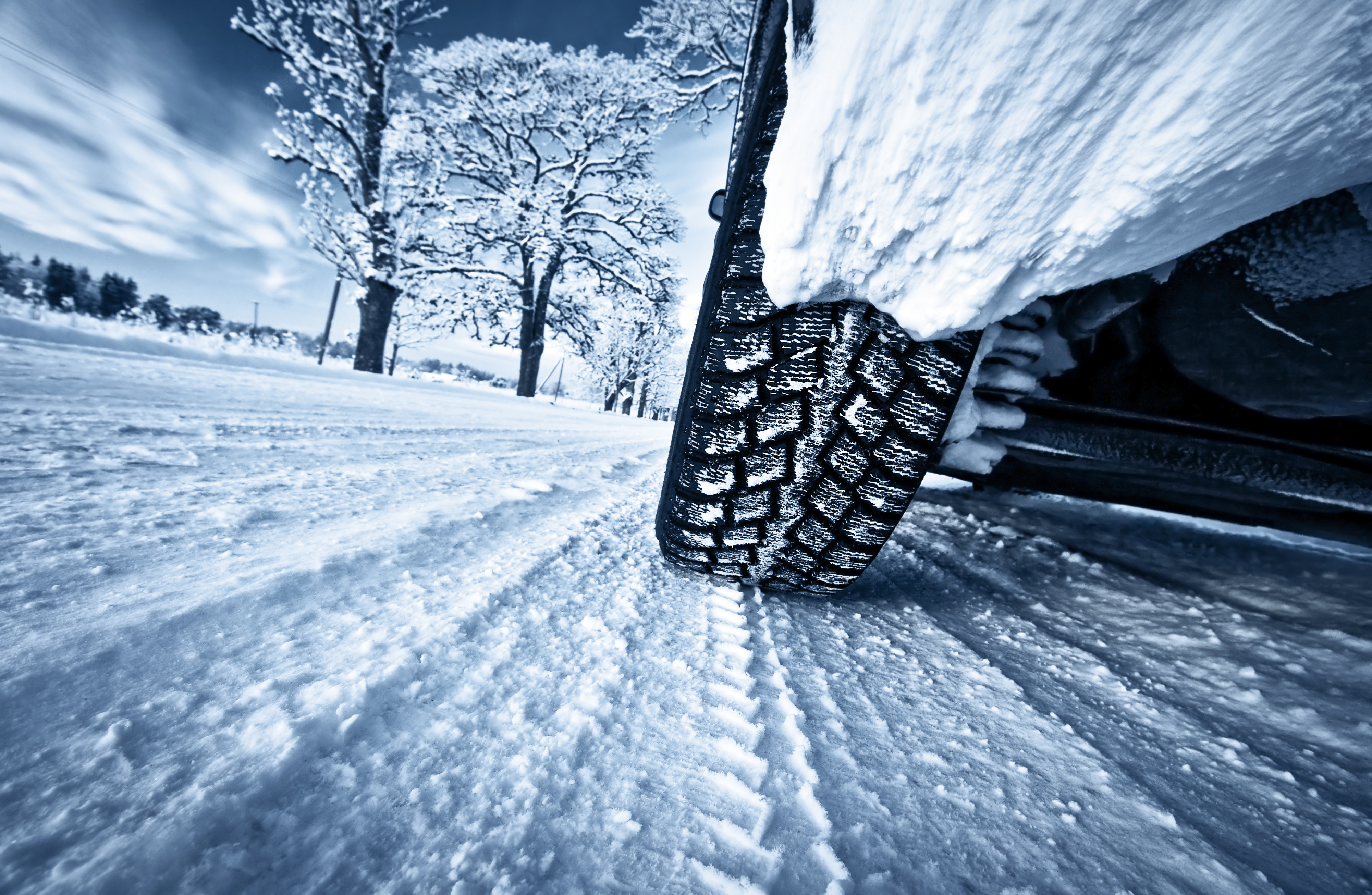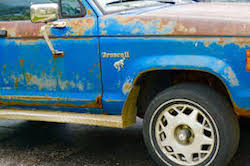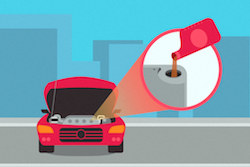Safety Guide
Kangaride offers the following guidelines for driver members with tips for promoting safe travel.

Kangaride offers the following guidelines for driver members with tips for promoting safe travel.
To ensure the safety of the passengers you are responsible for, you must have a vehicle that is in good working condition and practice safe driving habits, as specified in the Charter of Responsibilities.
To make sure your vehicle is in proper working condition, Kangaride strongly recommends that you have it inspected regularly by your mechanic.
Safety tips
In order to ensure that the condition of your vehicle is compatible with the use of the service, we recommend that you visually inspect it before each ride.
Tires
How is the wear on your tires?
For better traction, the depth of your tire tread should be at least 4.8 mm (6/32 in).
To ensure your safety, this is the minimum acceptable depth, even if the law allows you to use tires of only 1.6 mm (2/32 in).
Tread wear indicators can be found in the longitudinal tread grooves of your tires.
Tires on the same axle must be replaced at the same time. If you notice uneven tread wear or different wear on tires on the same axle, you should have your wheel alignment checked.
Your tires should be inspected regularly to identify any significant cuts or deformation on your tires’ tread and sidewall.
Having your tires replaced is the perfect time to ask your mechanic to inspect your suspension system, which is closely connected to the wear of your vehicle’s tires and brakes.
Do your tires have the right inflation pressure?
Every vehicle has a specific tire inflation pressure that is recommended by the manufacturer. The recommended tire pressure can be found on a label in your vehicle’s door frame, in the glove box, inside the gas cap cover, or in the owner's manual.
You should check your tire pressure (including that of your spare tire) once a month when it’s cold or when you are not driving often.
Be careful: overinflating your tires causes premature wear and diminishes road traction. Underinflating them, conversely, causes the vehicle to be unstable and leads to excessive fuel consumption.
Choice of tires
Each vehicle has a specific tire fitting with dimensions, load index, and speed rating that must be respected.
Your vehicle's tires are the only contact points between you and the road. It is therefore essential to choose the tires that best suit your vehicle and driving style.
Winter tires

Winter tires are mandatory in Quebec from December 1st to March 15. Apart from these dates prescribed by law, the driver should plan to have winter tires installed as soon as temperatures begin to hover around 7 °C. Your 4 tires must be identical in category and size so as not to compromise the stability of the vehicle.
Brakes
When should brake pads and discs be changed?
To ensure your safety, the braking system must be regularly maintained. Unlike most parts subject to wear, the frequency of replacement for brake pads and discs is not indicated by vehicle manufacturers. There is a simple explanation for this: brake wear depends heavily on your driving habits and where you do most of your driving. The brakes on a vehicle driven mostly in the city will tend to wear out much faster than those on a vehicle driven primarily on the highway.
If you’re comfortable operating an automobile, you can do a basic visual inspection of the wear on your brake pads and discs. Before diagnosing your brakes yourself, find out about the methods and measures authorized by law.
What are the warning signs of brake wear?
Softer resistance of the brake pedal, less bite, or any unusual vibration should be considered warning signs that call for inspection.
If the level of the brake fluid is getting low, it may be that your pads are too worn.
If the hand brake is too loose or does not lock the wheels fully, this usually indicates that the rear brakes are in poor condition.
In general, the front brake pads and discs are the most stressed, as the brake pressure is higher.
Seat belts
It is mandatory by law for every person in a moving road vehicle to wear a seat belt. Each seat must have a seat belt in perfect working order.
Before each departure, make sure that all passengers are properly buckled up.
Headlights, tail lights, and indicators
Headlights, tail lights, and indicators can easily cloud over from splashes and grit, like sand and salt, or from sun and rain. They need to be kept in good working order and free of any material that could reduce their effectiveness.
To be compliant, they must match the original ones and be visible at a distance of 150 meters away. If you notice poor visibility at night, have them inspected quickly.
All your lights must be functional. It is advisable to keep emergency bulbs on hand in case one burns out.
Windows and rear-view mirrors

Windshields and wipers
In Quebec, it is prohibited by law to drive with a windshield that has cracks or blemishes of more than 12 mm of diameter in the area swept by the wipers.
Wash your windshield so that accumulated dirt or snow does not obstruct the visibility of the road or signs.
The windshield must be equipped with a functional wiper system and your windshield washer tank must have sufficient antifreeze liquid in winter.
Keep an eye out for signs of wear on your wiper blades. Is their movement jerky? Do they leave unwanted streaks on the windshield? Are their ends deteriorating? If so, it’s time to replace them.
Rear-view mirrors
The vehicle must have at least two rear-view mirrors firmly attached:
the first, located at the top and center of the windscreen; the second, located on the outside left of the vehicle. If the vehicle has no rear window, or if it is permanently obstructed, there must be a rear-view mirror on the outside right.
Exterior mirrors must not be broken, cracked, tarnished, or have any sharp edges.
Make sure your mirrors are properly adjusted before each departure, and check them – along with your blind spots – before each lane change.
Bodywork and corrosion

In winter, the gravel on the roads can ricochet off the vehicle’s paint where salt can settle in and create ideal conditions for rust to develop.
The best way to avoid corrosion is to prevent it: when driving, keep at a good distance from other vehicles; also, regular washing and anti-rust treatments can keep the body of your vehicle in good condition.
Does your vehicle have any parts that are rusted? Take action to prevent the spread. Pay particular attention to rust on your vehicle’s vital parts, like the floor, chassis, engine, battery, brakes, and shock absorbers.
To be in compliance with the law, all body components must be securely attached and in good working order. The vehicle must also have an exhaust system that is properly secured and in good condition.
Inside the vehicle
Your vehicle has several safety features on board. They must be in good working order:
-Speedometer
-Heating and rear window defrosting system
-Dashboard and instrument panel warning lights (can indicate impending failure)
-Floor mats (must be firmly attached)
Is the interior of your vehicle loaded? Place heavy or bulky objects in the trunk or on the floor. If you have no choice but to place objects on the seats or higher up, fix them securely so they do not go flying if you have to brake suddenly. Also, make sure you have good rear-window visibility.
Fluid levels

Maintain liquids at the levels specified in the user manual:
-
Motor oil
-
Transmission oil
-
Power Steering fluid
-
Brake fluid
-
Coolant (antifreeze)
-
Windscreen washer fluid (antifreeze)
Did you know?
Ridesharing helps reduce traffic accidents. Several studies have shown that passengers can keep drivers alert and can encourage them to adopt a safer attitude at the wheel.


